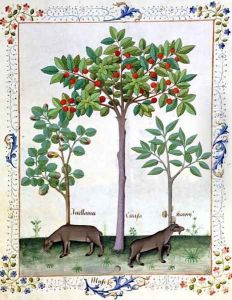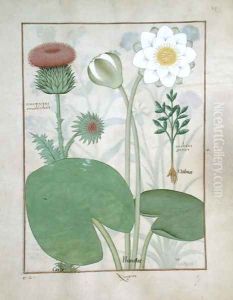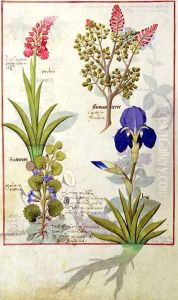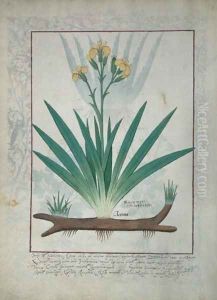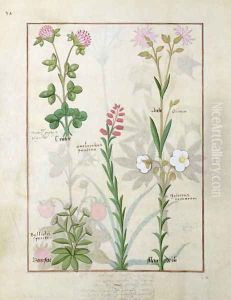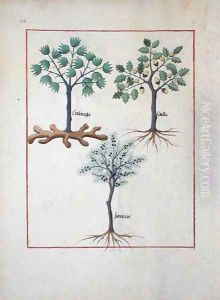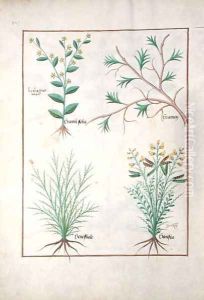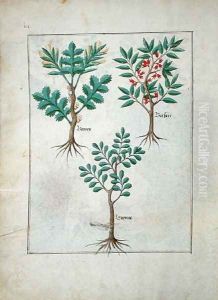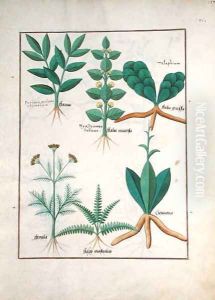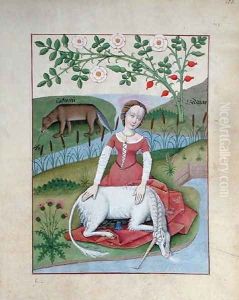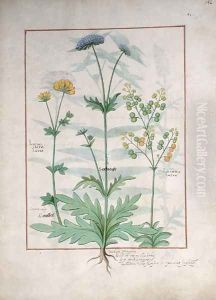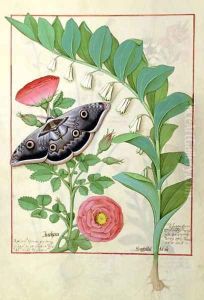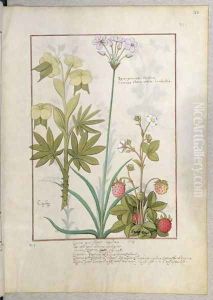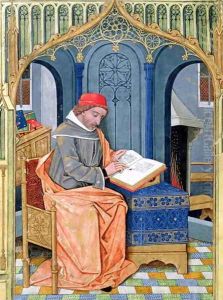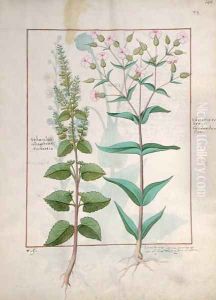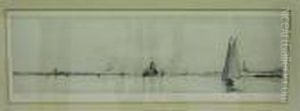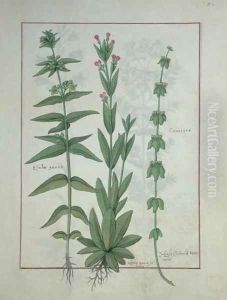





Elusae Gennus, Caraway Thyme, and Crosswort, illustration from The Book of Simple Medicines by Mattheaus Platearius d.c.1161 c.1470
-
About Reproduction
Discover the allure of art with our faithful reproduction of "Elusae Gennus, Caraway Thyme, and Crosswort, illustration from The Book of Simple Medicines by Mattheaus Platearius d.c.1161 c.1470", originally brought to life by the talented Robinet Testard. Unlike posters or prints, our hand-painted oil painting breathes an unique sense of depth and texture into your space. Every detail, every stroke, and every texture is meticulously recreated, paying the perfect homage to Robinet Testard and his artistic vision.
Owning this piece is more than just decoration - it's a statement of your refined taste in art. Let the vibrant colors and intricate details of this replica serve as a daily reminder of the beauty in our world. Elevate your decor and appreciate the richness of art with our replica of this masterpiece.
-
Painting Description
The illustration titled "Elusae Gennus, Caraway Thyme, and Crosswort" is a notable work from "The Book of Simple Medicines," originally authored by Mattheaus Platearius, who passed away around 1161. This particular illustration was created circa 1470 by Robinet Testard, a distinguished French illuminator known for his detailed and vibrant manuscript illustrations. "The Book of Simple Medicines" is a medieval herbal compendium that provides descriptions and medicinal uses of various plants, reflecting the medical knowledge and botanical understanding of the time.
Robinet Testard's illustration is a fine example of the artistic and scientific collaboration that characterized medieval manuscripts. Testard's work is celebrated for its meticulous attention to detail and its ability to convey the physical characteristics of plants with remarkable accuracy. The illustration features three distinct plants: Elusae Gennus, Caraway Thyme, and Crosswort. Each plant is depicted with careful attention to its unique features, such as leaf shape, flower structure, and overall growth habit, which would have been essential for identification and medicinal use.
Elusae Gennus, Caraway Thyme, and Crosswort were all valued in medieval medicine for their various therapeutic properties. Elusae Gennus, though less commonly known today, was likely used for its purported healing qualities. Caraway Thyme (Thymus caraway) was prized for its aromatic and digestive benefits, while Crosswort (Cruciata laevipes) was utilized for its supposed ability to treat wounds and skin conditions.
The illustration not only serves as a botanical reference but also as a piece of art that reflects the medieval synthesis of science, medicine, and aesthetics. Testard's work on "The Book of Simple Medicines" exemplifies the rich tradition of illuminated manuscripts, where the visual representation of knowledge was as important as the textual content. This illustration remains a valuable artifact for both art historians and those interested in the history of medicine and botany.
-
Lead Time & Shipping
When you order this oil painting replica, it typically takes 2-3 weeks to paint. If the artwork is more complex, it might need a little more time to ensure the best quality. Once it's ready, we'll send you a photo for your approval. After you give the green light, we'll ship it to you for free.
-
Return & Refund
We believe in the quality of our hand-painted oil painting reproductions, and your satisfaction is our priority. If for any reason, you are not completely satisfied with your purchase, we offer a 45-day return policy. You can return your artwork within 45 days of receipt and receive a full refund. Please note that the artwork must be returned in the original packaging and in the same condition as it was received.





